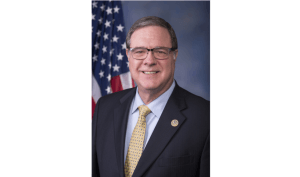This press release was provided by Washington State House Republicans.
Legislation by Rep. Gina Mosbrucker to further investigations of missing and murdered indigenous women and other indigenous persons gained unanimous approval by the Washington State House of Representatives Tuesday.

The Morning Wire: Keeping you informed on politics, policies, and personalities of Washington State.
House Bill 1713 continues upon legislation passed last year that brought the State Patrol together with federally recognized tribes, tribal law enforcement, urban Indian organizations and the Governor’s Office of Indian Affairs to study and identify the issue of missing Native American women in Washington state and report recommendations to the Legislature.
“At one of the meetings, the Yakama Nation brought more than 300 people, and there were more than four hours of heartbreaking testimony. People were asking, ‘Where is my family member? My mom? My aunt? My sister?’ We learned enough from these meetings to do action items now,” said Mosbrucker, R-Goldendale.
The bill would establish two liaison positions within the Washington State Patrol (WSP) to further investigations of missing and murdered indigenous women and other indigenous persons.
“When someone was missing from their tribe, they needed help getting through the process. They were reaching out to tribal police, city and county officials, and the State Patrol — but there wasn’t a single source that could tell them what they could do,” said Mosbrucker. “These tribal liaisons would reach out and provide that support.”
The measure would also require the WSP to develop a best practices protocol for law enforcement response to missing persons reports. In addition, the Governor’s Office of Indian Affairs would be required to provide the WSP with government-to-government training.
“I’ve seen three images that keep me up at night. One is a red dress sewn by the tribes tied to overpasses throughout the country. It’s just a red dress hanging in the wind, symbolizing the missing Native American women. Another image is a handprint of paint across the mouth of a Native American woman. The third image is a 12-year-old Native American girl who is holding a sign that simply says, ‘Am I next?’” said Mosbrucker. “These images drive me to do this work and to fight through the challenges we need to go through to make sure we find what happened to these people and to provide families with the help and justice they deserve.”
The bill now goes to the Senate for further consideration.
Your support matters.
Public service journalism is important today as ever. If you get something from our coverage, please consider making a donation to support our work. Thanks for reading our stuff.










